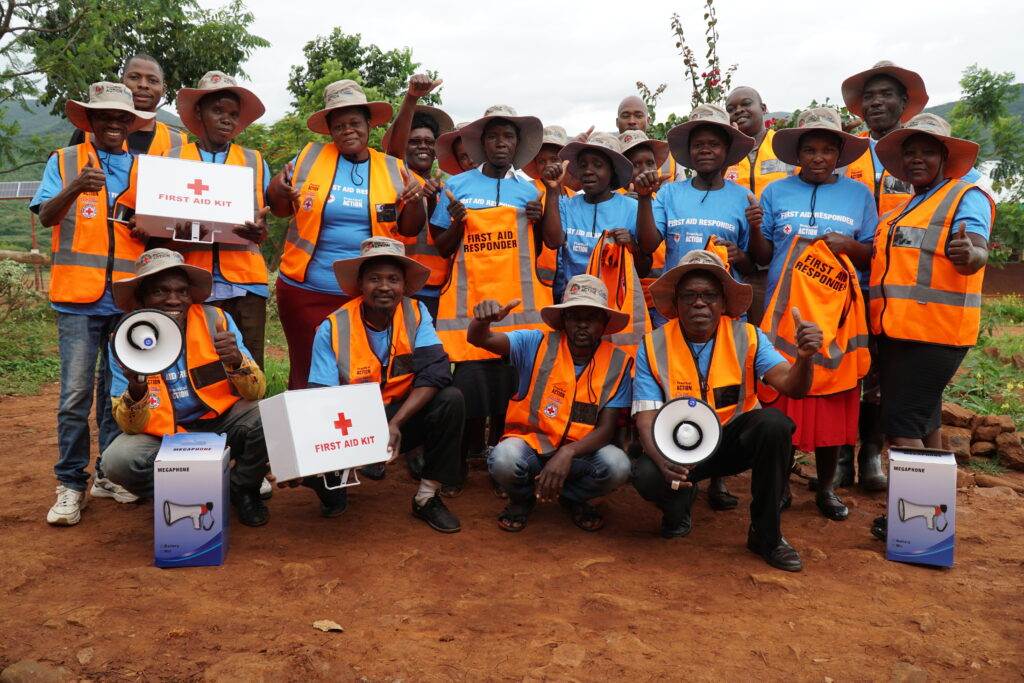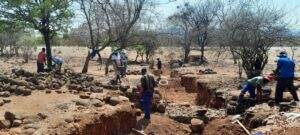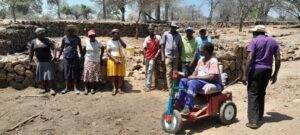Zimbabweans Better Prepared for Climate Impacts
The southern African country of Zimbabwe is better prepared for the impact of climate change than it was two years ago, when Cyclones Idai and Kenneth devastated parts of the country.
Cyclone Freddy has ravaged parts of Madagascar and Mozambique, moving inland to Zimbabwe—and it may not be the last cyclone this season.
The cyclone has blown off roofs at a few schools in parts of Manicaland Province, but thousands of people in Chimanimani District say that they are better prepared for disaster thanks to the investment in flood mitigation and adaptation by Practical Action through Zurich Flood Resilience Alliance.
For two years, Practical Action has been working with communities to understand and improve their flood resilience and ensure that floods have no negative impact on their businesses.
The work Practical Action is doing is intended to showcase the importance of preparing properly for flooding, so that governments throughout the region can replicate this approach.
Cyclone Idai was one of three cyclones that devastated parts of Chimanimani District between 2019 and 2022. The heavy rains resulted in catastrophic landslides and flooding and impacted an estimated 270,000 Zimbabweans, of which nearly 240,000 were from the Chimanimani and surrounding districts.

Part of the 81 trained first aid responders with their regalia and first aid kits donated by PA.
Emmanuel Madhara, Practical Action’s Country Director for Zimbabwe said “Zimbabwe has a dual challenge of seasonal and cyclone-induced flooding in a changing climate. Chimanimani was one of the worst hit communities when Cyclone Idai hit the country in 2019. We lost more than 200 people and property and livestock worth thousands of dollars.
Infrastructure such as roads were also heavily damaged that it was impossible to reach affected communities by road, so lives that could have been saved were lost, but I am happy to say that the same can’t be said about the situation now.
Through our investment in floods and disaster preparedness, communities like Chimanimani can breathe a sigh of relief as they are better equipped now to respond to any disaster that will come. The threat of Cyclone Freddy enabled us to put our preparation into practice and we will showcase this example of good practice so it can replicated elsewhere and more people can be protected.”
Climate change is a global challenge we all face, but it’s particularly hard on the people who are already struggling the most. People living in low-income countries like Zimbabwe are hit hardest by climate disasters like floods, droughts, storms, cyclones, and heatwaves. The eastern part of the country is particularly vulnerable because it borders Mozambique, where cyclones often form before making landfall.
Practical Action is working with 11 communities in the Chimanimani district located in the southeastern part of the country, bordering Mozambique in the east. Climate change has significantly increased the risk of cyclone induced disasters like Cyclone Freddy and Chimanimani is one of the most vulnerable districts, lying in the path of cyclones from the Indian Ocean.

Villagers from Ward 5 of Chimanimani District undertaking gully reclamation works.
Our work in Chimanimani over the last two years has been preparing the community to become resilient to potential disasters like Cyclone Freddy by:
- Constructing a stone wall around the community’s water points with the help of community members to protect it from mud. This helps provide all year-round clean water for the communities because flooding usually fills the well with sand.
- Constructing a separate water hole and connecting it to the well so that livestock have their own source of water instead of drinking from the same source as people.
- Setting up disaster risk committees in 11 wards in the district. They have the mandate to plan local responses such as evacuation and raising timely alerts on impending disasters.
- Training 81 first aid responders and donating first aid kits to every disaster risk reduction committee in the wards of Chimanimani District to support them during disasters.
- Collaborating with the communities in 11 wards in the district to rehabilitate gullies that had become a danger to key infrastructure including schools, homesteads and water sources.
- The gully reclamation processes that have been introduced include constructing gabions, reinstating, and improving land that has been disturbed by excess runoff and preventing further degradation. This has helped to prevent deep and wide trenches formed by excessive soil erosion that could lead to the collapsing of houses, roads, and other key infrastructure as they widen.
- Planting over 200 trees as a building mechanism in the area. The trees will help to stabilize the soil and the roots will soften the ground to allow for better refilling of the spring, as water will easily find its way into the ground.
Joshua Mazviro, a member of Nemutedzi Village, Chimanimani District said:
“This eye-capturing wall that you see here today goes beyond a story of beauty but relief for the community especially women and the disabled like me. We now have guaranteed unlimited access to clean water all-year round. We are not stopping here. Now we have received a donation of more than 200 trees as a part of our resilience building initiative and we are digging holes to plant the trees.”

Joshua and the other community members standing in front of the water point they rehabilitated.
Michael Nyamatore, Councilor for Ward 1 in Chimanimani District said:
“The time of Cyclone Idai was a very trying time for us as a community. We were helpless as we waited for assistance. Now that we have strengthened these disaster risk reduction committees and we have received first aid training, I can proudly say we have been equipped to help ourselves. Early warning teams are in place and primary health care is now available on the ground. When disaster strikes again, we will not lose as many lives.”
As the Chimanimani community continues to focus on resilience, it is clear that they are well prepared to face any potential disaster that might happen. For the first time, they have a plan in place that will help them mitigate the effects of disasters. They believe that this approach can be replicated in other parts of the country and Southern Africa region.
The Flood Resilience Measurement for Communities (FRMC) project is funded by Zurich Flood Resilience Alliance and is implemented by Practical Action.